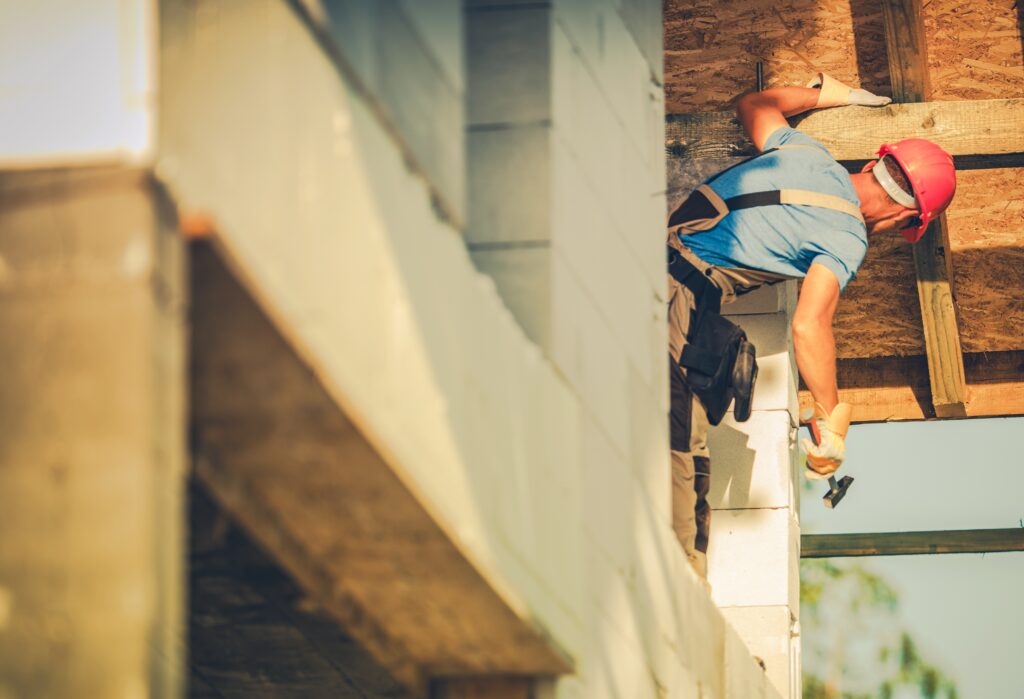BLOG
Concrete Construction VS. Wood Framing
by TRP Ready Mix on January 3, 2021

Which is the better choice?
The use of wood versus concrete materials in construction has been heavily debated for years. Some believe that there are significantly more benefits to concrete over wood construction, while others suggest the opposite. So, which is better? With so many different opinions readily available, it can be confusing to know which is the better option. Let’s decode the differences between the two materials, going over the pros, cons, uses, etc., to help builders, contractors, and homeowners make the best decision possible for their project.
Read More: The Scientific Breakdown of Concrete
Concrete VS Wood in Construction
Pros of Wood
Wood frames are traditionally faster to construct. This is because wood is much lighter than brick, making the labour less intensive, but also, in some cases, wood homes can be constructed in a factory and simply transferred to the building site for the final construction process.
Such a simple building process also makes wood construction easier to remodel. Wood frames are lighter and more versatile to accommodate additions to the structure, such as doors and window frames. Also, as mentioned above, building with wood generally results in a 30% quicker turnaround time than building with concrete.
Cons of Wood
Where wood is, termites happen. Termites love wood, and a wood house is a playground for these pests to chow down. Wood structures are also less resistant to moisture, which is not desirable for structures in regions that are susceptible to storm. Moisture can find its way in through small openings and can do much more damage than to a brick-and-mortar wall.
Pros of Concrete
There are a few pros of concrete. Between its strength and its ability to trap warmth even in a harsh winter, it makes for an attractive candidate for structural construction. Concrete is also moisture resistant, so it poses little risk when living in a place that has a lot of rain or snow.
Brick and mortar walls have the ability to soak up small amounts of water that may find its way through the stucco. This means that your interior is less likely to get damaged over time.
Read More: What Is Fiber-Reinforced Concrete and Why Is It Useful?
Cons of Concrete
Though concrete is strong and an attractive building choice, it also has some cons. Building a structure from concrete is much more labour-intensive than it is to build a wooden structure. Not only does this make them less cost-effective, but it also makes the building process much slower.
Concrete VS Wood in Costs
The quick turnaround time that comes with wood construction means fewer expenses on your part of wood structures means that wood construction is more cost-effective than concrete is. Wood materials are also less expensive, and labour is less intensive. Wood is not as heavy to handle, there are fewer liabilities, and the project can finish more quickly.
Concrete construction involves a lot of heavy materials and using special machinery to operate the construction. Materials can add up, and concrete construction is also more laborious, which makes it more experience. Concrete also requires deep foundations, which means there may be more building costs involved.
Concrete VS Wood in Sustainability
Wood has the least impact on the environment. If the wood is sourced from sustainably managed forests, it is the best choice in terms of environmental impact. Wood construction uses fewer natural resources and releases fewer contaminants into the air and water than concrete would.
However, concrete does not come without praise for its sustainability. When dealing with the proper concrete supplier, your mix can come from recycled material, which contributed to environmental consciousness. Concrete is also energy-efficient, as it can require less heating to be used, which cuts down on excessive hydro usage. This is not only cost-efficient, but it preserves energy in seasons like winter, where lots of energy is burned for people to stay warm.
Concrete VS Wood in Health and Safety
Though the idea of having a house made primarily of organic materials is lovely, but when you think about the potential of everything that can go wrong with it, the dream ends there. Wood construction is more likely to support the growth of mold, mildew, asbestos, and other toxic microorganisms. It also houses bugs and animals within the walls due to its natural makeup. Concrete is stronger and does not house anything that can potentially ruin your health or compromise your safety. Wood structures are also flimsy and may not hold up in the event of a harsh storm or a fire.
Both concrete and wood constructed structures are beautiful in their ways, and they both deliver plenty of pros and cons. At the end of the day, the decision should be based on many factors: the building you want to have built, the environment in which it will be built, and the environment that surrounds where it will be built. Consult with an expert contracting company to get the best answers on what types of materials should be used when building your dream house, cottage, store, or anything else.
